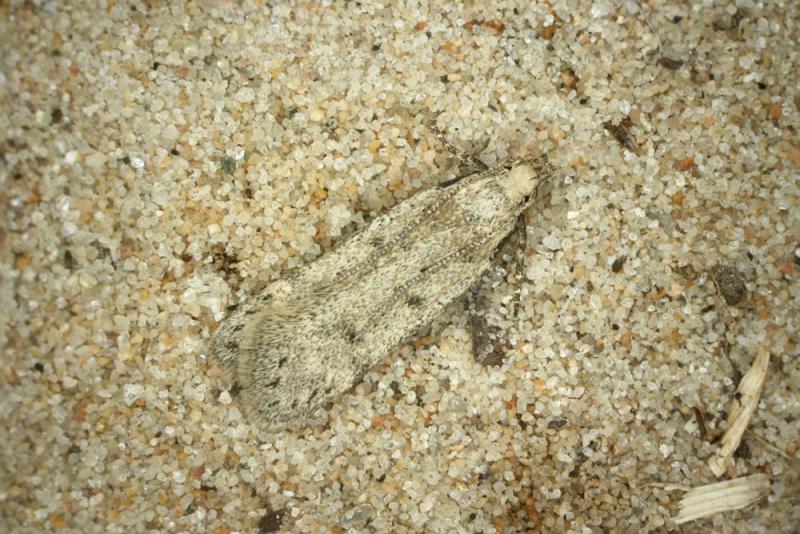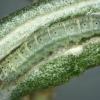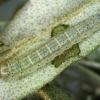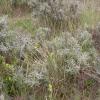35.104 Gelechia hippophaella (Schrank, 1802)
Status and Distribution
Rare, probably restricted to coastal eastern and south-east England where the foodplant occurs on coastal dune systems within its native range.

Provisional map
Habitat
Coastal dune systems probably only where sea buckthorn occurs within its native range.
Finding the Moth
Larva: between the leaves of the terminal shoots which are spun tighly and flatly together. At one site in 2016 it has been shown to prefer growth on the open edges of mature stands or small, new growth in open situations at heights of about 30-40cm.
On the Dutch website www.bladmineerders.nl they report the larva initially mines the leaves in an irregular corridor or blotch before feeding between the spuns shoots.
Adult: when disturbed it drops to the ground and hides amongst the ground vegetation; comes readily to light.
Similar Species
A large species with a rather plain light greyish-ochreous forewing and any blackish spots small and rather inconspicuous, except that at the base of the costa. Gelechia rhombella, which is also pale with a black spot at the base of the costa, is smaller, has segment two of the labial palps black (ochreous grey, speckled dark brown in G. hippophaeella) and has two distinct black spots in the middle of the forewing.
Single brooded from mid-August to the end of September.
Earliest: 9th August 2014 (VC61)
Latest: 1st October 1989 (VC61)






